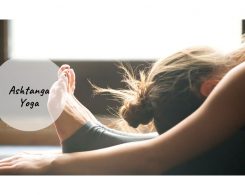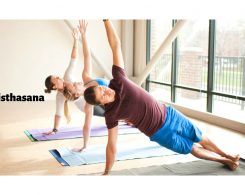- 1Share
Stress is an inevitable part of life. Every phase of our ives brings its own set of challenges. This is actually great for our growth and development. But when stress gets the best of you and begins to harm your body, it’s time to minimise it. Lucky for all of us, the ancient and powerful practice of Pranayama has been preserved for us to learn and benefit from. Here are two breathing exercises that will help you combat stress and restore your mind and body to a natural state of relaxation.
Breath and Stress: What’s the Connection?
Your breath and your emotional, physical and mental state are deeply connected. When under stress, your breath is shallow, short and unstable. At the same time, your heartbeat is faster. Your blood pressure rises, stress hormones surge, and the entire harmony of your body is disturbed.
Here’s where it gets interesting. When you are in this state, do one thing differently and your body goes back to it’s natural state as your mind drifts into calmness – breathe correctly!
Just breathe correctly, and you will activate your body’s relaxation response, leading to:
- Stable heart rate and blood pressure
- Increase in oxygen levels in blood
- A drop in stress hormones like adrenaline and cortisol
- Relaxed muscles
- Better blood flow to the brain
- A sense of peace
How to breathe correctly? There are two powerful breathing exercises you can choose from….
Breathing Exercises To Stress Less And Relax More
1. Ujjayi breath
This Pranayama technique is popular among breathing exercises for stress. It’s fantastic, in the way that it relaxes as well as energises your body and mind. It is commonly caled the “Hissing breath” because you’d end up creating a hissing sound while breathing.
Directions:
- Sit in Sukhasana with your muscles relaxed, eyes closed and jaw loose.
- Through your mouth breathe in and out deeply.
- When you exhale, softly contract the back of your throat. Your outgoing breath should sound like your voice when you whisper.
- Next, do the same contraction as you inhale.
- When you have got it right, close your mouth lightly and do the same with your nose. Your breathing should sound like the ocean waves. Keep it steady and rhythmic.
2. Nadi Shodhana
Nadi Shodhana is also called alternate nostril breathing. It is one of the best breathing exercises for people with aggravated vata and anxiety. It also pacifies the pitta and kapha doshas.
Directions:
Vishnu Mudra: First, learn this hand position. Fold the tips of your index and middle fingers, and touch the tips to the base of your thumb. Your ring and little finger should be left open and touching each other.
- Sit comfortably with your eyes closed and spine erect.
- Hold the Vishnu Mudra with your right hand and bring it to your nose.
- With your thumb gently closing your right nostril, inhale fully through your left nostril.
- Then, close your left nostril with your ring and little finger while simultaneously releasing your right nostril to exhale.
- When fully exhaled, gently pause.
- Repeat steps 3, 4 and 5 but inhaling from the right nostril and exhaling from the left one.
- This makes one round where you inhale from the right and exhale from the left, and then inhale from the left and exhale from the right. Repeat this round for 15 minutes. Keep your breath steady and light. Remember to gently pause after every exhalation.
Final Words
You can do either of these two simple breathing exercises for 15 minutes everyday, and your mind and body will begin to experience steady states of relaxation that are not as easily disrupted by stress as before. Over a period of time, they will take you to higher states of health and wellness.
More ways to reduce stress in your work life: Ayurveda for Office-goers






Leave a Reply